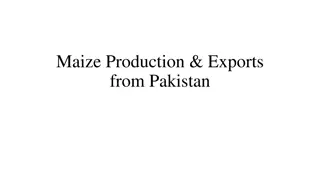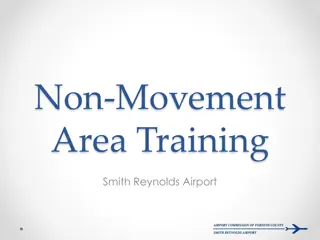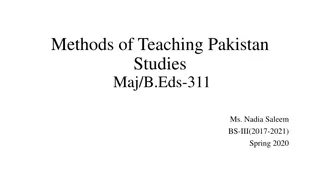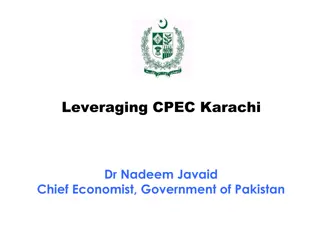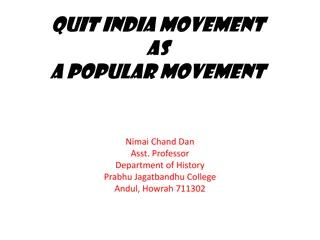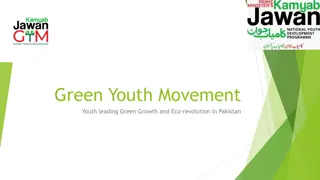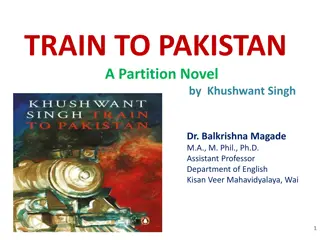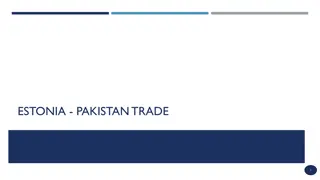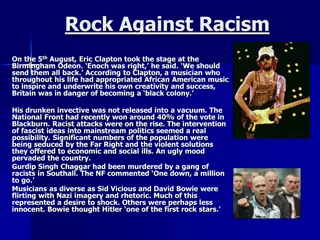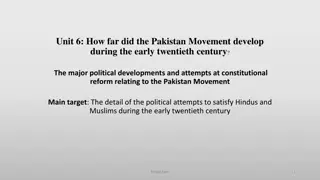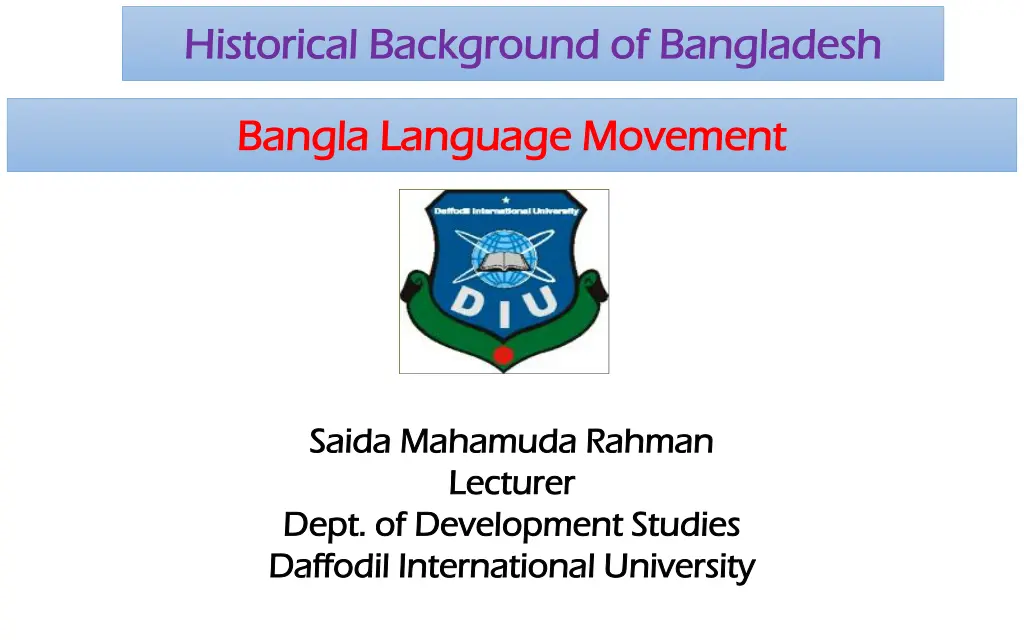
Bangla Language Movement in Bangladesh History
Explore the historical background and significance of the Bangla Language Movement in Bangladesh. Delve into different phases, discrimination against East Pakistan, the six-point movement, and the birth of Bangladesh. Discover the unique event that shaped the political landscape of Bangladesh through the struggle for language rights.
Download Presentation

Please find below an Image/Link to download the presentation.
The content on the website is provided AS IS for your information and personal use only. It may not be sold, licensed, or shared on other websites without obtaining consent from the author. If you encounter any issues during the download, it is possible that the publisher has removed the file from their server.
You are allowed to download the files provided on this website for personal or commercial use, subject to the condition that they are used lawfully. All files are the property of their respective owners.
The content on the website is provided AS IS for your information and personal use only. It may not be sold, licensed, or shared on other websites without obtaining consent from the author.
E N D
Presentation Transcript
Historical Background of Historical Background of Bangladesh Bangladesh Bangla Language Movement Bangla Language Movement Saida Saida Mahamuda Mahamuda Rahman Lecturer Lecturer Dept Dept. of Development Studies . of Development Studies Daffodil International University Daffodil International University Rahman
Objectives of this Class Objectives of this Class To investigate the historical ground of the language movement To discuss different the phases of the language movement To understand the significance of the language movement To identify the massive discrimination against East Pakistan To find out the key aspiration of six-point movement To examine the reasons behind the birth of Bangladesh.
The The Bangla Bangla Language Movement Language Movement The Bangla Language movement is a unique event in the history of the political Movement of Bangladesh. Bengali was the mother tongue of about 56 percent of the people of Pakistan. On the other hand, Urdu was the mother tongue of only 6 percent people of the whole of Pakistan. Although 56 percent of the people of Pakistan were Bengalis, the West Pakistani didn t want Bengali to become the state language. But, Bengalis wanted to make their language the state language along with Urdu and had no objections against that language (Rahman, 2012. P. 198). On 6 6 and and 7 7 September September 1947 1947 the the youth youth workers workers of of East in Dhaka which was presided over by Tasadduk Hossain. This Conference, for the first time took a resolution demanding Bengali as the language of the offices and the courts and also as the medium of instruction in East Pakistan. East Pakistan Pakistan held a Conference Various Stages of Language Movement Various Stages of Language Movement
First Stage of the Language Movement First Stage of the Language Movement Formation Formation of of Tamaddun Tamaddun Majlish published the booklet on the Language Movement entitled Pakistaner Rastrabhasha Bangla Na Urdu. Prof. Abul Kashem, Dr. Qazi Motahar Hossain and Abul Mansur Ahmed were the authors of this booklet. Tamaddun Majlish Majlish: : On 15 September 1947 In In October October 1947 Parishad to give the Language Movement an organizational structure. Education Education Conference Conference in in Karachi Karachi: In December 1947 an Educational Conference was held in Karachi sponsored by the Government of Pakistan. In this Conference, the decision was taken to make Urdu the state language of Pakistan. 1947, Tamaddun Majlish formed Rastrabhasa Sangram Formation Formation of of Sangram Sangram Parishad was reconstituted with a view to making Bengali a state language. The Sangram Parishad raised the following demands 1 1. . Bengali shall be the medium of instruction and the language of the offices and law Courts of East Bengal; 2 2. . There will be two state languages of Pakistan Bengali and Urdu. Sangram Parishad Parishad: : In January 1948 the Rastrabhasa
First Stage First Stage of the Language Movement of the Language Movement Demand Demand by Pakistan started to record its proceedings in Urdu side by side with English, Dhirendra Nath Dutta of Comilla, a member of Assembly, protested against it and demanded that Bengali be accorded official recognition as one of the languages of the Constituent Assembly. by Dhirendra Dhirendra Nath Nath Dutta Dutta: : In February 1948 when the first Assembly of All All- -Party Party Rastrabhasa Rastrabhasa Sangram 1948 formed the All-Party Rashtrabhasha Sangram Parishad. The Sangram Parishad called a general strike on 11 March 1948 to resist the conspiracy of the Government in the language issue. On that day, many students were injured and many leaders including Sheikh Mujibur Rahman, Shamsul Huq and Oli Ahad were arrested. It was decided that 11 March would be declared Bengali Bengali Language Sangram Parishad Parishad and and Protest Protest on on 11 11 March March 1948 1948: : On 2 March Language Demand Demand Day Day . In such a situation, the on 15 March and signed an agreement with them. By this agreement, he release release the the arrested arrested students, students, to to investigate investigate police Assembly Assembly for for making making Bengali Bengali a a state state language language. . the Chief Chief Minister Minister Khwaja Khwaja Nazimuddin Nazimuddin met the Sangram Parishad he agreed agreed to move a a Bill Bill in in the to the police excesses, excesses, to to move
First Stage First Stage of the Language Movement of the Language Movement Announcement Announcement of of Muhammad Jinnah Jinnah: : On Muhammad Ali Jinnah visited Dhaka and addressed a public meeting at the then Race Course Maidan. In that meeting, he declared, "Urdu and only Urdu shall be the state language of Pakistan". When he repeated these words at the Convocation Ceremony held on 24 March March at at the the Curzon Curzon Hall protested vehemently by shouting 'No, No'. On that day, Parishad submitted a memorandum to Muhammad Ali Jinnah. 8 Muhammad Ali March March Ali 21 21 1948 1948, Mohammad Ali Mohammad Ali Zinnah on on 21 March 1948 21 March 1948 Zinnah Dhaka University 24 Hall, the students Rastrabhasha Protest of the students Protest of the students
First Stage First Stage of the Language Movement of the Language Movement 8 From this time (March 1948) on till he died Jinnah never again said that he wanted Urdu as the only state language of Pakistan (Rahman 2012. P. 99). Those who wanted Urdo as the only state language had just one argument to back them: it was, they said, an Islamic Islamic language language . But we could not figure out how Urdu had ended up becoming as Islamic language (Rahman 2012. P. 98). Proposed Proposed of of the that introduction of Arabic script or Urdu letters for writing Bengali. Dr. Shahidullah was proposed to be appointed for the purpose of introducing the Arabic script. But he rejected the proposal. the introduction introduction of of Arabic Arabic script script: In 1948, It is proposed In In April April 1949 memorandum to Pakistan Education Advisory Board protesting against this objectionable proposal. 1949 the students of Bengali Department, DU submitted a
Last Stage Last Stage of the Language Movement of the Language Movement Formation Formation of of Purbo Bengal formed the Purbo Bangla Bhasha Committee for reforming the Bengali language. Maulana Akram Khan was the President of this Committee. Purbo Bangla Bangla Bhasha Bhasha Committee Committee: : On 9 March 1949 the Government of East Announcement Announcement of of Liaquat Khan declared in the Constituent Assembly that only Urdu would be the state language of Pakistan. But in the face of strong protest from the people of East Bengal, the Constituent Assembly postponed the discussion. Liaquat Ali Ali Khan Khan: : In September 1950 The Prime Minister Liaquat Ali Announcement Announcement of of Khawaja Dhaka, Khwaja Nazimuddin declared that Urdu would be the only state language of Pakistan. This declaration created a strong resentment and as a mark of protest, a call for hartal throughout the province was given. Khawaja Nazimuddin Nazimuddin: : On 26 January 1952 at a public meeting in Meeting Meeting of of All strike on 4 February and observe 21 February as the State Language Day and to observe hartal in the country. February 21 had been chosen as the State Language Day since the East Pakistan Provincial Assembly was scheduled to sit on that day. All- -Party Party Rashtrabhasha Rashtrabhasha Sangram Sangram Committee Committee: The Committee decided to call a
Final Stage Final Stage 144 144 Section Section: : On 20 February the Government of Nurul Amin, being scared of the student Movement imposed section 144 at 3 p.m., and banned the processions and the meetings. 21 21 February February: : On 21 February, the students of Dhaka University in an organized way defied section 144 and leading a procession from the University campus proceeded towards the Provincial Assembly which was in session, chanting the slogan "Rashtrabhasha.Bangla Chai". In a tense situation, the students assembled on the campus. The police used tear gas to disperse the students. And clashes occurred between the police and the students. At At one one stage, and and students students including were were martyred martyred and injured injured. . stage, the the police police opened including Jabbar and many many students opened fire Jabbar, , Rafiq students and fire. . A A number number of of people Rafiq, , Barkat Barkat and and people people were people Salam were and Salam
Major Events after 21 Major Events after 21st st February February On On 22 Ekushey martyrs. Then a big rally, came out on the street as a mark of protest. Police opened fire on this rally too. As a result, Safiur Rahman was killed. On the same day, in a meeting of the students held at the Dhaka Medical College hostel, it was decided to build a Shaheed Minar. Accordingly, the Students erected a 12-feet high Shaheed Minar in front of DMC. 22 February February: : Gayebana Janaza held for On On 23 Rahman formally inaugurated the Shaheed Minar. But in the evening of 24 February, police demolished this Shaheed Minar. In memory of that, another Shaheed Minar was built later on the same site and that is the present Central Shaheed Minar. 23 February February: : The father of Shaheed Safiur
Bangla Bangla as State language as State language At last, the Government of Nurul Amin adopted a resolution in the Provincial Assembly to the effect that a proposal would be raised at the Constituent Assembly containing the demand to accord Bengali the status of one of the state languages of Pakistan. In the face of continuous student's and people's Movements the Pakistan Government was compelled to give Bengali the status of one of the state languages. Finally, Bengali was given the status of one of the state languages in the Constitution Constitution of of Pakistan Pakistan of of 1956 1956.
Significance and Achievements Significance and Achievements The Language Movement of 1952 was the first organized expression of the consciousness of the exploited and deprived masses of Bangladesh. This consciousness born out of the Language Movement inspired all the subsequent Movements and helped to achieve the political, the cultural and the economic freedom leading to independence. This movement laid a major foundation of our liberation war. On February 29, 1956: Recognition made on the Pakistan constitution that The state language of Pakistan shall be Urdu and Bengali. UNESCO recognized 21st February as International Mother Language Day in 1999. International Status of Bangla Language (Sierra Leone) This This movement movement acted movements movements: : Landslide victory in the provincial election in 1954 (In the East Bengal Legislative Assembly the United Front got 236 out of 309 seats) Constitutional Movement in 1956 Education Movement in 1962 Six-points Movement in 1966 Mass-uprising in 1969 Great victory in 1971 acted as as the the inspirational inspirational for for the the following following
Discriminations against East Pakistan Discriminations against East Pakistan Form the very beginning, Pakistan had been following a policy of partition against East Pakistan. Political, military, administrative and economic discrimination had been increasing gradually. beginning to perceive discriminated against in business, government service and all spheres of trade and commerce. Because Karachi was the capital of Pakistan, Bengalis were being deprived of all sorts of advantages. Bengalis they were being that were , food scarcity was recorded in many places. In particular, people of Faridpur, Comilla and Dhaka districts were facing a calamity due to acute shortage of food grain. On that time, government introduced the Cordon Cordon System System . This meant that there was to be no movement of food from one district to another. ( (Rahman Rahman 2012 2012. . P P. . 103 103) ) The The disparities disparities between Pakistan Pakistan will will be between West be described described in in the West Pakistan Pakistan and the next next slides and East East slides. .
Socio Socio- -Cultural Disparity Cultural Disparity Bengali was the mother tongue of 56 other hand, Urdu was the mother tongue of only Pakistan (Census 1951). Thus Bengali, in spite of being the language of the majority of the people of Pakistan, was ignored by the Pakistani ruling group as a state language which was a substantial discrimination against the people of East Pakistan. On the other hand, East Pakistan also deprived from getting reasonable facilities in various social sectors. 56 percent percent of the people of Pakistan. On the only 6 6 percent percent people of the whole of Sl. No Sl. No Areas Areas West Pakistan West Pakistan East Pakistan East Pakistan 1 Total Population 5.50 Crore 7.50 Crore 2 Number of Doctors 12400 7600 3 Rural Health Complex 325 88 4 Social Development Centre 81 52 [Source: M.A. [Source: M.A. Rahim Rahim, , Bangladesher Bangladesher Itihas Itihas, P. 480] , P. 480]
Political Disparity Political Disparity East Pakistan became subjected to political discrimination immediately after the birth of the state of Pakistan. From m 1947 1947 to to 1958 1958, among all the presidents of Pakistan, one was from East Pakistan who spoke in Urdu. In reality, East Pakistan was politically neglected by Pakistan from the very beginning. For example, United United Front Front got got 236 236 seats out of 309 in the provincial election in 1954 but this government could not continue more then two years. During During the prisoners that was going on had no precedence in any civilized country at any stage of history. Political prisoners appealed time and again for their rights and privileges people in their position enjoyed in British period. Unfortunately, their petitions were ignored. ( (Rahman the regime regime of of Liaquat Liaquat Ali Ali & & Nurul Nurul Amin Amin, , the kind of torture and harassment of political Rahman 2012 2012. . P P. . 172 172) ) In the general elections held on majority. The Awami League secured 167 Pakistan Pakistan and and won won 288 288 out form the government. In protest against these discriminatory policies of West Pakistan, the people of East Pakistan raised the demands for their rights of self-determination and autonomy. At this, the West Pakistani ruling clique forgot the principles of democracy and perused a policy of suppressing the just demands of the people of East Pakistan. They did not even hesitate to term Sheikh Mujibur Rahman and other patriotic leaders of this region as traitors. on 7 7 December December 1970 167 seats out of of 300 300 seats seats in the Provincial Assembly. But Awami League did not 1970, , the Awami League acquired an absolute seats out out of of 169 169 National National Assembly Assembly seats seats in in East East
Employment or Military Disparity Employment or Military Disparity While the security of East Pakistan was uncertain, the province was also subjected to serious discrimination in military matters. The headquarters of the three Defense Services were established in West Pakistan. No Bengali could be found in the high posts in the Defense Services as those posts were monopolized by the West Pakistanis. In the army, 95 posts were held by the West Pakistanis and East Pakistan had a share of only 5 5 percent 95 percent percent percent. In administrative arena, within 1966, 77% 1st class jobs belonged to the west Pakistani whereas only 23% filled up by the East Pakistani, On the other hand, 74% for 2nd Class, 73% for 3rd Class and 70% for 4th Class jobs went to west Pakistan while remaining were for East Pakistan. SL No. SL No. Areas Areas West Pakistan West Pakistan East Pakistan East Pakistan 1 Central Civil Jobs 84% 16% 2 Foreign Jobs 85% 15% 3 Army 95% 5% [Source [Source: : M M. .A A. . Rahim Rahim, , Bangladesher Bangladesher Itihas Itihas, , P P. . 479 479] ]
Economic or Financial Disparity Economic or Financial Disparity During the Pakistani rule, East Pakistan was subjected to severe economic disparity. As a result, East Pakistan could never be self- sufficient economically. The provincial government did not have any control over its currency and economy. As everything was controlled by the Centre, all the income of East Pakistan flew away to West Pakistan. Head offices of the State Bank and other banks, insurance companies, trading concerns and foreign missions were established in West Pakistan. About two thirds of the foreign exchange of Pakistan was earned by selling the jute of East Pakistan. But the jute farmers could never get the fair price for their products. SL. No SL. No Areas Areas West Pakistan West Pakistan East Pakistan East Pakistan 1 Foreign Currency for 80% 20% Development USA Aid House Building Industrial Bank 2 3 4 56% 88% 76% 34% 12% 24% [Source: M.A. [Source: M.A. Rahim Rahim , , Bangladesher Bangladesher Itihas Itihas, P. 480] , P. 480]
Disparity in Educational facility Disparity in Educational facility There were huge disparities in education sector also. The discrimination was prevailing in the area of education facility mentioned here: East Pakistan East Pakistan 1968 1968- -69 West Pakistan West Pakistan 1968 1968- -69 Grade Grade 69 69 University Medical, Engineering College Primary School 04 09 09 17 28307 39418 Source: Bangladesh documents, Ministry of External Affairs, India, 1971 (p:17)
Chapter Related Questions Chapter Related Questions What happened in the 21st February of 1952? What is the significance of the language movement in the political history of Bangladesh? Write down the discriminations of West Pakistan against the people of East Wing. What are the causes of independence war of Bangladesh? Thank you all!!!





